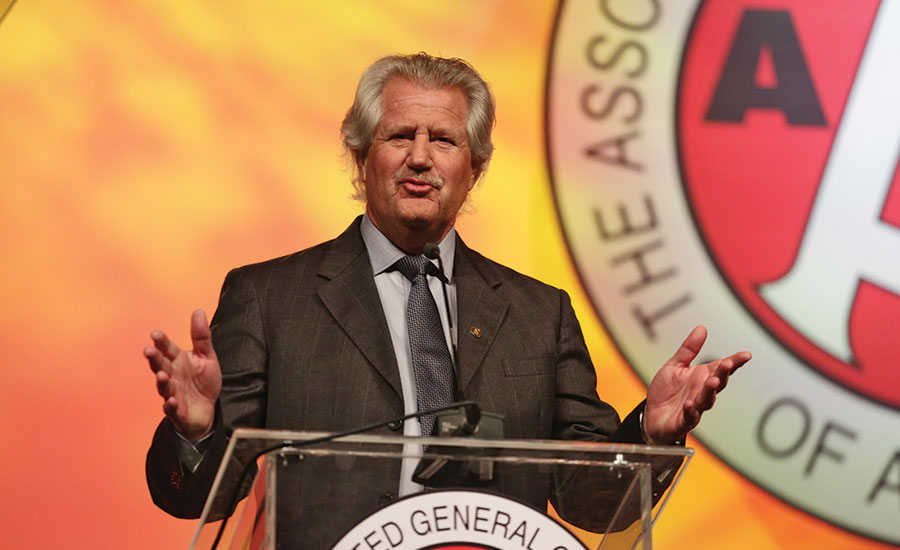General contractors and specialty contractors will have full equality within the Associated General Contractors of America for the first time in the association’s 98-year history. The board vote to amend the group’s national bylaws, giving all members equal status, came on the final day of AGC’s national convention. The annual event, held March 9-11 in San Antonio, drew more than 2,300 attendees.
Member representatives from the specialty trades can now hold board positions and run for the association’s highest offices, including president, which, previously, they could not do. But association officials said the change would not alter the traditional path toward AGC leadership, which runs through its four divisions: building, federal and heavy construction, highway and transportation, and utility infrastructure. Also, revision of the national bylaws will not affect GCs and subs at the chapter level, AGC officials said. Many chapters already have adopted their own parity measures.
“We represent contractors—the entire industry, not just niches of it,” says AGC CEO Steve Sandherr. “This is in keeping with the way things work on jobsites.” He adds that the equality measure passed with “no evidence of opposition.”
“This is a significant development for us,” says AGC Director of Communications Brian Turmail. “It speaks to the reality of a changing industry.” However, he says AGC has no plans to change its name. “That’s part of our history,” Turmail adds.
“All of this is part of our organizational goal to be more relevant,” said 2015 AGC President Chuck Greco, chairman of Linbeck Group, San Antonio, in his keynote address. He also said AGC is continuing its push to address the industry’s workforce shortage.
“We need to prepare for a future that requires us to be skilled in safety and supervisory training but also in evolving technologies,” he added.
In his annual industry outlook, Ken Simonson, AGC chief economist, told attendees that U.S. construction employment is up an average of 4.2% over the past year, with firms adding 19,000 workers in February alone. The number of unemployed construction workers reached its lowest February total since 2000.
Simonson pointed to a 2015 AGC survey in which 86% of respondents said they were having a hard time finding qualified workers. More than three-quarters of firms reported that they expect hiring conditions to worsen with growing workloads, and nearly a quarter have turned down projects because of worker shortages, he said. To help meet that need, AGC is increasing its focus on career and technical education. “We’re trying to change the cultural and societal bias that every kid needs to go to college,” Sandherr says.
Many construction firms, he observes, “have taken things into their own hands” by boosting pay and benefits and investing in better training and retention programs.
AGC also is calling for reforms to the federal Perkins Act, last reauthorized in 2006, as well as more private funding for craft training, hiring more veterans and seeking broader support for programs that increase workforce safety and diversity.
“We all need to be more inclusive,” says the association’s 2016 president, Mark Knight, president of Foothills Contracting Inc., Aberdeen, S.D. “If we don’t, we’re missing out on a lot of good people, especially women, who are key to the future of this industry.”







Post a comment to this article
Report Abusive Comment